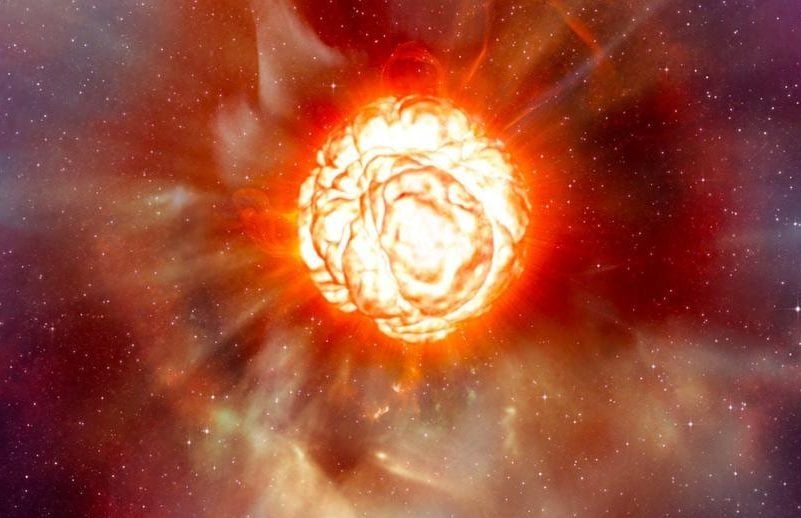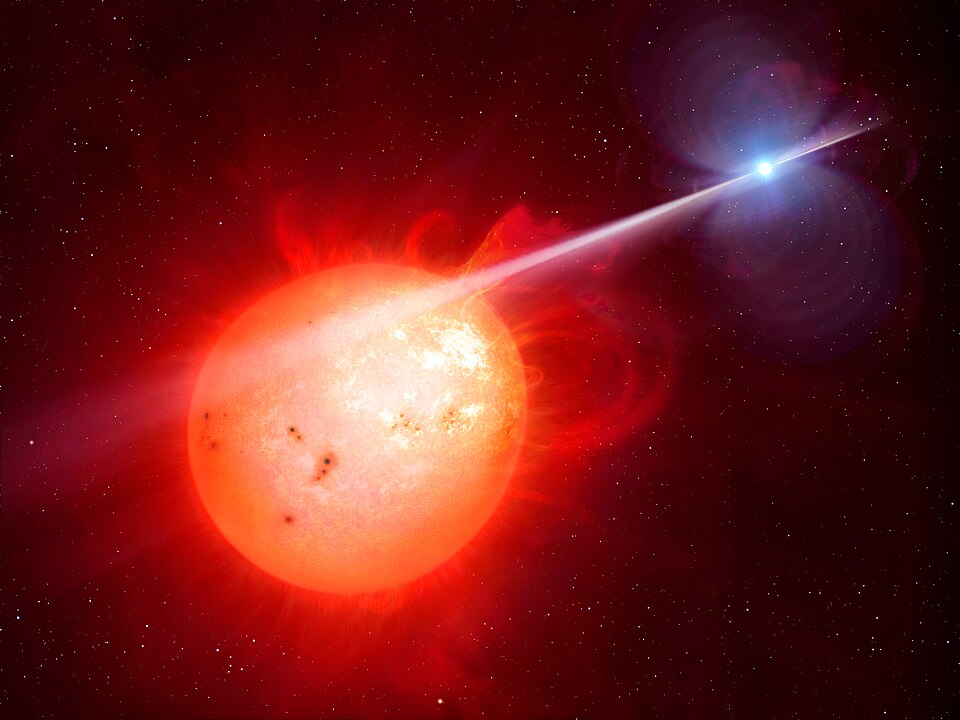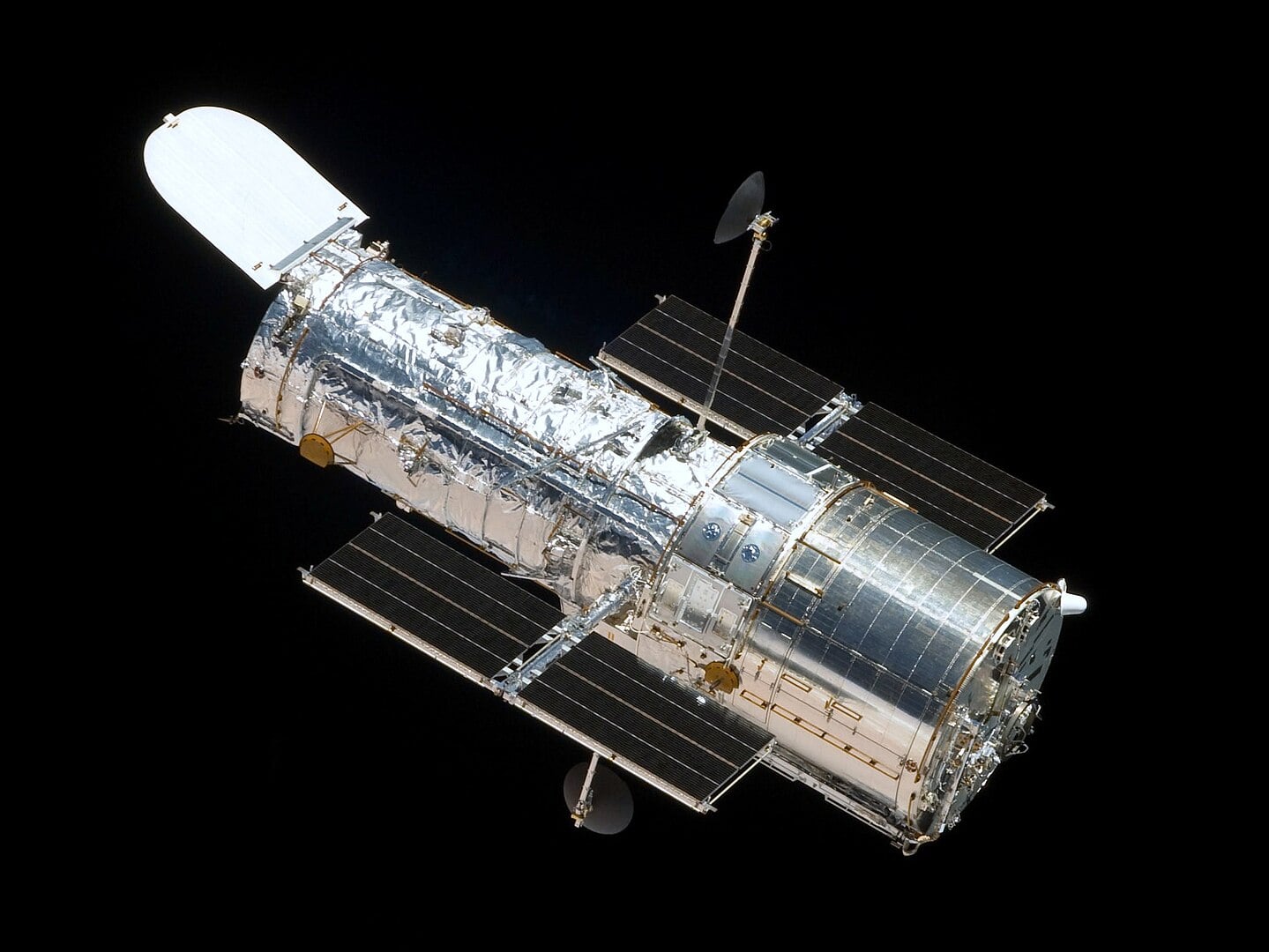Betelgeuse is one of the most well known stars in the night sky. Located about 640 light years from Earth in the constellation Orion, it's a red supergiant nearing the end of its life, destined to explode as a supernova. It's now over 700 times the size of the Sun and has captivated astronomers with its unpredictable brightness. In late 2019, it dimmed dramatically, sparking speculation that it might be on the verge of exploding. While that event turned out to be a massive dust cloud temporarily blocking its light, it highlighted how volatile this dying star truly is.
 Artist impression of Betelgeuse going supernova at the end of its life. (Credit : RAS)
Artist impression of Betelgeuse going supernova at the end of its life. (Credit : RAS)
Betelgeuse belongs to a fascinating category of stellar objects that exhibit puzzling behaviour. About one third of cool, luminous stars with large convective envelopes like Betelgeuse display long term brightness variations known as Long Secondary Periods (LSPs.) For decades, astronomers have debated what causes these fluctuations, proposing various theories including internal pulsations, surface dust formation, and giant convection cells within the star. However, recent research has begun to converge on a more intriguing explanation: Betelgeuse may not be alone.
The evidence increasingly points toward the presence of a low mass companion star orbiting the red supergiant every approximately 2,100 days (roughly 6 years) at a distance comparable to Saturn's orbit around our Sun. The hypothetical companion star would have a mass ranging from 0.5 to 2 times that of our Sun. While such a companion wouldn't dramatically alter Betelgeuse's evolutionary path, it could influence the supergiant indirectly through tidal forces and interactions with stellar winds.This scenario aligns well with current understanding of massive star formation, as stars like Betelgeuse typically originate as part of binary systems.
 Artist's impression of the binary star system AR Scorpii (Credit : M. Garlick/University of Warwick/ESO)
Artist's impression of the binary star system AR Scorpii (Credit : M. Garlick/University of Warwick/ESO)
The theory of a companion also offers explanations for other aspects of Betelgeuse's behaviour. The star's unusual rotation; with speeds of 5–15 km/s could result from tidal interactions with the orbiting companion. This mechanism would also account for the observed 36 year cycle in both the star's brightness and radial velocity patterns, challenging earlier theories that attributed the star's spin to a past stellar merger.
The suspected companion to Betelgeuse remains elusive, likely because it's small, cool, and easily overwhelmed by Betelgeuse's brightness—especially during recent dimming events. In a targeted search, researchers led by Jared Goldberg used the Hubble Space Telescope's STIS spectrograph to look for the companion in far-ultraviolet light, timing the observations for when it would be most visible. Despite these efforts, no clear signals were detected. Still, this doesn't rule out its existence—the companion may simply fall below current detection limits and could appear in future UV or X-ray observations under better conditions.
 The Hubble Space Telescope (Credit : NASA)
The Hubble Space Telescope (Credit : NASA)
The search for a hidden companion to Betelgeuse is more than a scientific curiosity—it could help our understanding of the star's strange behaviour and future supernova explosion. While recent Hubble observations haven't confirmed the companion, ongoing evidence from brightness changes, rotation, and long-term cycles continues to support the idea of a binary system. As technology improves and future observations explore other parts of the orbit, the mystery may finally be solved. Whether Betelgeuse is alone or with a partner, it continues to reveal new clues about the life and death of massive stars.
 Universe Today
Universe Today
